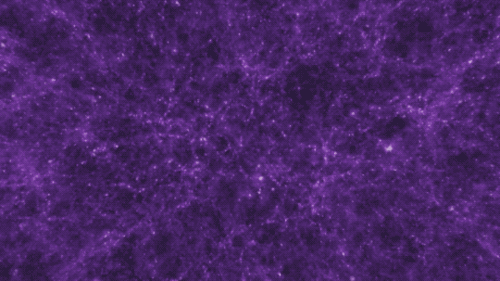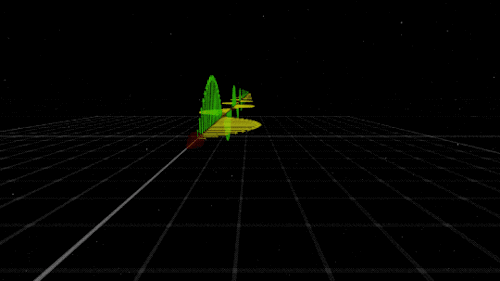Okay, That Is Really Funny Lol
Okay, that is really funny lol
Also - I’m back from my self-imposed vacation! I’m drafting the next chapter and starting my post schedule tomorrow, so look forward to new content coming soon!
I hope you’re all doing well :)
WANT MORE? GET YOUR HEAD STUCK IN THE STARS AT MY BLOG!

Here’s some physics.
More Posts from Acosmicgeek and Others
Woah :o
So, basically, like the Mission Space ride at Epcot (that one is my favoriteeeee)?
WANT MORE? GET YOUR HEAD STUCK IN THE STARS AT MY BLOG!

Testing and Training on the Boeing Starliner : NASA astronaut Mike Fincke works through a check list inside a mockup of Boeing’s CST-100 Starliner during a simulation at NASA’s Johnson Space Center on Aug. 21, 2019. (via NASA)
It surprises me how disinterested we are today about things like physics, space, the universe and philosophy of our existence, our purpose, our final destination. Its a crazy world out there. Be curious.
Stephen Hawking
WANT MORE? GET YOUR HEAD STUCK IN THE STARS AT MY BLOG!
Goregous :O
In the Life of a Star Chapter 11, Additional Topics, I’ve been thinking about putting in a section on solar flares and prominences. Maybe if I have enough room, I do love this photo.
WANT MORE? GET YOUR HEAD STUCK IN THE STARS AT MY BLOG!

Dramatic solar activity was going on last night and I was able to create a gif of this solar prominence! 🌞🌞🌞
Solar prominences are different from solar flares since solar prominences are mostly pulled in by the Sun’s gravity, creating a majestic loop like shape! 🤩 🤩🤩
Taken by me (Michelle Park) using the Slooh Canary Five telescope on July 2nd, 2020.
A Cosmic Geek, at Sunset
Parents: Wow look at how beautiful the sunset is. Catherine? Catherine? Why are you looking away?
A Cosmic Geek: Shush I'm trying to figure out what phase the Moon is in. Is that a Waxing Gibbous? Waning??? (Edit: it was a Waxing Gibbous - also there's going to be a Full Moon on May 7th!!!)
WANT MORE? GET YOUR HEAD STUCK IN THE STARS AT MY BLOG!
I was researching nebulae for my next article and I wanted to share some images for you guys :)
Nebula are some of the most beautiful things in space. We mostly focused on galaxies and the stars within them, but we forget that in-between galaxies exists the interstellar medium. This is where the nebulae live.
Hope you enjoyed!
WANT MORE? GET YOUR HEAD STUCK IN THE STARS AT MY BLOG!
That’s a great explanation of particle physics xD
But really, this stuff is so interesting! I love reading about stuff like this - so good work NASA!
If you liked the four forces governing the universe, you might like this book I just finished reading for the seventh time (Neil DeGrasse Tyson’s “Astrophysics for People in a Hurry”). It talks about these forces and a lot of other really cool concepts, like dark energy and chemistry-related-to-space.
WANT MORE? GET YOUR HEAD STUCK IN THE STARS AT MY BLOG!
May the Four Forces Be With You!
May the force be with you? Much to learn you still have, padawan. In our universe it would be more appropriate to say, “May the four forces be with you.”

There are four fundamental forces that bind our universe and its building blocks together. Two of them are easy to spot — gravity keeps your feet on the ground while electromagnetism keeps your devices running. The other two are a little harder to see directly in everyday life, but without them, our universe would look a lot different!
Let’s explore these forces in a little more detail.
Gravity: Bringing the universe together

If you jump up, gravity brings you back down to Earth. It also keeps the solar system together … and our galaxy, and our local group of galaxies and our supercluster of galaxies.
Gravity pulls everything together. Everything, from the bright centers of the universe to the planets farthest from them. In fact, you (yes, you!) even exert a gravitational force on a galaxy far, far away. A tiny gravitational force, but a force nonetheless.

Credit: NASA and the Advanced Visualization Laboratory at the National Center for Supercomputing and B. O'Shea, M. Norman
Despite its well-known reputation, gravity is actually the weakest of the four forces. Its strength increases with the mass of the two objects involved. And its range is infinite, but the strength drops off as the square of the distance. If you and a friend measured your gravitational tug on each other and then doubled the distance between you, your new gravitational attraction would just be a quarter of what it was. So, you have to be really close together, or really big, or both, to exert a lot of gravity.
Even so, because its range is infinite, gravity is responsible for the formation of the largest structures in our universe! Planetary systems, galaxies and clusters of galaxies all formed because gravity brought them together.
Gravity truly surrounds us and binds us together.
Electromagnetism: Lighting the way

You know that shock you get on a dry day after shuffling across the carpet? The electricity that powers your television? The light that illuminates your room on a dark night? Those are all the work of electromagnetism. As the name implies, electromagnetism is the force that includes both electricity and magnetism.
Electromagnetism keeps electrons orbiting the nucleus at the center of atoms and allows chemical compounds to form (you know, the stuff that makes up us and everything around us). Electromagnetic waves are also known as light. Once started, an electromagnetic wave will travel at the speed of light until it interacts with something (like your eye) — so it will be there to light up the dark places.

Like gravity, electromagnetism works at infinite distances. And, also like gravity, the electromagnetic force between two objects falls as the square of their distance. However, unlike gravity, electromagnetism doesn’t just attract. Whether it attracts or repels depends on the electric charge of the objects involved. Two negative charges or two positive charges repel each other; one of each, and they attract each other. Plus. Minus. A balance.
This is what happens with common household magnets. If you hold them with the same “poles” together, they resist each other. On the other hand, if you hold a magnet with opposite poles together — snap! — they’ll attract each other.
Electromagnetism might just explain the relationship between a certain scruffy-looking nerf-herder and a princess.
Strong Force: Building the building blocks

Credit: Lawrence Livermore National Laboratory
The strong force is where things get really small. So small, that you can’t see it at work directly. But don’t let your eyes deceive you. Despite acting only on short distances, the strong force holds together the building blocks of the atoms, which are, in turn, the building blocks of everything we see around us.
Like gravity, the strong force always attracts, but that’s really where their similarities end. As the name implies, the force is strong with the strong force. It is the strongest of the four forces. It brings together protons and neutrons to form the nucleus of atoms — it has to be stronger than electromagnetism to do it, since all those protons are positively charged. But not only that, the strong force holds together the quarks — even tinier particles — to form those very protons and neutrons.
However, the strong force only works on very, very, very small distances. How small? About the scale of a medium-sized atom’s nucleus. For those of you who like the numbers, that’s about 10-15 meters, or 0.000000000000001 meters. That’s about a hundred billion times smaller than the width of a human hair! Whew.
Its tiny scale is why you don’t directly see the strong force in your day-to-day life. Judge a force by its physical size, do you?
Weak Force: Keeping us in sunshine

If you thought it was hard to see the strong force, the weak force works on even smaller scales — 1,000 times smaller. But it, too, is extremely important for life as we know it. In fact, the weak force plays a key role in keeping our Sun shining.
But what does the weak force do? Well … that requires getting a little into the weeds of particle physics. Here goes nothing! We mentioned quarks earlier — these are tiny particles that, among other things, make up protons and neutrons. There are six types of quarks, but the two that make up protons and neutrons are called up and down quarks. The weak force changes one quark type into another. This causes neutrons to decay into protons (or the other way around) while releasing electrons and ghostly particles called neutrinos.
So for example, the weak force can turn a down quark in a neutron into an up quark, which will turn that neutron into a proton. If that neutron is in an atom’s nucleus, the electric charge of the nucleus changes. That tiny change turns the atom into a different element! Such reactions are happening all the time in our Sun, giving it the energy to shine.
The weak force might just help to keep you in the (sun)light.

All four of these forces run strong in the universe. They flow between all things and keep our universe in balance. Without them, we’d be doomed. But these forces will be with you. Always.
You can learn more about gravity from NASA’s Space Place and follow NASAUniverse on Twitter or Facebook to learn about some of the cool cosmic objects we study with light.
Make sure to follow us on Tumblr for your regular dose of space: http://nasa.tumblr.com
Dark matter is one of my favorite mysteries in Astrophysics, oh I would just love to study it. Some are using particle accelerators to try to study DM and figure out what it is - and it’s so so exciting!!!
WANT MORE? GET YOUR HEAD STUCK IN THE STARS AT MY BLOG!

I love this meme format
We choose to go to the moon in this decade and do the other things, not because they are easy, but because they are hard, because that goal will serve to organize and measure the best of our energies and skills, because that challenge is one that we are willing to accept, one we are unwilling to postpone, and one which we intend to win.
John F. Kennedy
WANT MORE? GET YOUR HEAD STUCK IN THE STARS AT MY BLOG!
Woah :o
That is soooooooo cool!
I don’t do excess research into exoplanets - like I do stars - but wow. Isn’t it just amazing how much information we can get from such a far object??? Science has really come so far, it brings a single tear to my eye ;)
I’ll definitely be on the lookout for more info!
WANT MORE? GET YOUR HEAD STUCK IN THE STARS AT MY BLOG!


YALE’S EXPRES LOOKS TO THE SKIES OF A SCORCHING, DISTANT PLANET
Yale technology is giving astronomers a closer look at the atmosphere of a distant planet where it’s so hot the air contains vaporized metals.
The planet, MASCARA-2 b, is 140 parsecs from Earth – or roughly 2.68 quadrillion miles. It’s a gas giant, like Jupiter. However, its orbit is 100 times closer to its star than Jupiter’s orbit is to our Sun.
The atmosphere of MASCARA-2 b reaches temperatures of more than 3,140 degrees Fahrenheit, putting it on the extreme end of a class of planets known as hot Jupiters. Astronomers are keenly interested in hot Jupiters because their existence had been unknown until 25 years ago and they may offer new information about the formation of planetary systems.
“Hot Jupiters provide the best laboratories for developing analysis techniques that will one day be used to search for biosignatures on potentially habitable worlds,” said Yale astronomer Debra Fischer, the Eugene Higgins Professor of Astronomy and co-author of a new study that has been accepted by the journal Astronomy and Astrophysics.
Fischer is the guiding force behind the instrument that made the discovery possible: the Extreme PREcision Spectrometer (EXPRES), which was built at Yale and installed on the 4.3-meter Lowell Discovery Telescope near Flagstaff, Ariz.
The primary mission of EXPRES is finding Earth-like planets based on the slight gravitational influence they have on their stars. This precision also comes in handy when looking for atmospheric details of far-away planets, the researchers said.
Here’s how it works.
As MASCARA-2 b crosses the direct line of sight between its host star and Earth, elements in the planet’s atmosphere absorb starlight at specific wavelengths – leaving a chemical fingerprint. EXPRES is able to pick up those fingerprints.
Using EXPRES, Yale astronomers and colleagues from the Geneva Observatory and Bern University in Switzerland, as well as the Technical University of Denmark, found gaseous iron, magnesium, and chromium in MASCARA-2 b’s atmosphere.
“Atmospheric signatures are very faint and difficult to detect,” said co-author Sam Cabot, a graduate student in astronomy at Yale and leader of the study’s data analysis. “Serendipitously, EXPRES offers this capability, since you need very high-fidelity instruments to find planets outside our own solar system.”
The study’s lead author, astronomer Jens Hoeijmakers of the Geneva Observatory, said EXPRES also found evidence of different chemistry between the “morning” and “evening” sides of MASCARA-2 b.
“These chemical detections may not only teach us about the elemental composition of the atmosphere, but also about the efficiency of atmospheric circulation patterns,” Hoeijmakers said.
Along with other advanced spectrometers such as ESPRESSO, built by Swiss astronomers in Chile, EXPRES is expected to collect a wealth of new data that may dramatically advance the search for exoplanets – planets orbiting stars other than our own Sun.
“The detection of vaporized metals in the atmosphere of MASCARA-2 b is one of the first exciting science results to emerge from EXPRES,” Fischer said. “More results are on the way.”
True.
Iron actually takes more energy to fuse than it releases, so the inward pressure needed to keep the star from collapsing isn’t enough when it’s mainly fusing iron, and then it collapses.
WANT MORE? GET YOUR HEAD STUCK IN THE STARS AT MY BLOG!

When Stars Die…….
-
 theholyfollowerofdeath liked this · 3 years ago
theholyfollowerofdeath liked this · 3 years ago -
 sonofsamo liked this · 3 years ago
sonofsamo liked this · 3 years ago -
 blcks2hp liked this · 4 years ago
blcks2hp liked this · 4 years ago -
 yulilo-ve reblogged this · 4 years ago
yulilo-ve reblogged this · 4 years ago -
 yulilo-ve liked this · 4 years ago
yulilo-ve liked this · 4 years ago -
 fresh-calzone liked this · 4 years ago
fresh-calzone liked this · 4 years ago -
 sleepgxng-blog liked this · 4 years ago
sleepgxng-blog liked this · 4 years ago -
 lightlistenerwindwatcher liked this · 4 years ago
lightlistenerwindwatcher liked this · 4 years ago -
 wisemilkaddict liked this · 4 years ago
wisemilkaddict liked this · 4 years ago -
 froggybassist liked this · 4 years ago
froggybassist liked this · 4 years ago -
 nonbinnerybuddy reblogged this · 4 years ago
nonbinnerybuddy reblogged this · 4 years ago -
 nonbinnerybuddy liked this · 4 years ago
nonbinnerybuddy liked this · 4 years ago -
 angel-arising liked this · 4 years ago
angel-arising liked this · 4 years ago -
 aka-tinderella liked this · 4 years ago
aka-tinderella liked this · 4 years ago -
 asumsaus liked this · 4 years ago
asumsaus liked this · 4 years ago -
 theoriginalsextherapist liked this · 4 years ago
theoriginalsextherapist liked this · 4 years ago -
 haven-is-happy liked this · 4 years ago
haven-is-happy liked this · 4 years ago -
 just-someone-u-never-met liked this · 4 years ago
just-someone-u-never-met liked this · 4 years ago -
 palecashscissorspatrol liked this · 4 years ago
palecashscissorspatrol liked this · 4 years ago -
 splashofgenius liked this · 4 years ago
splashofgenius liked this · 4 years ago -
 the-candy-store-cat liked this · 4 years ago
the-candy-store-cat liked this · 4 years ago -
 denendeqamalganjanulid reblogged this · 4 years ago
denendeqamalganjanulid reblogged this · 4 years ago -
 starbutterflythegnome liked this · 4 years ago
starbutterflythegnome liked this · 4 years ago -
 ifluffysquirrel liked this · 4 years ago
ifluffysquirrel liked this · 4 years ago -
 riickety-cricket liked this · 4 years ago
riickety-cricket liked this · 4 years ago -
 rockhoppr3 liked this · 4 years ago
rockhoppr3 liked this · 4 years ago -
 firminfollowing liked this · 4 years ago
firminfollowing liked this · 4 years ago -
 karasuhi-blog1 liked this · 4 years ago
karasuhi-blog1 liked this · 4 years ago -
 demonsterest liked this · 4 years ago
demonsterest liked this · 4 years ago -
 astounding-pretzel liked this · 4 years ago
astounding-pretzel liked this · 4 years ago -
 blacknerd318 liked this · 4 years ago
blacknerd318 liked this · 4 years ago -
 tired-programmer liked this · 4 years ago
tired-programmer liked this · 4 years ago -
 sensualtexasgal liked this · 4 years ago
sensualtexasgal liked this · 4 years ago -
 vegas-coach liked this · 4 years ago
vegas-coach liked this · 4 years ago -
 lilnaq liked this · 4 years ago
lilnaq liked this · 4 years ago -
 stil1apice0fgarbage-blog liked this · 4 years ago
stil1apice0fgarbage-blog liked this · 4 years ago -
 el-shrimp-gato liked this · 4 years ago
el-shrimp-gato liked this · 4 years ago
